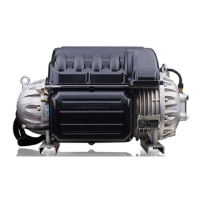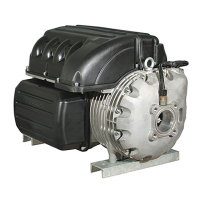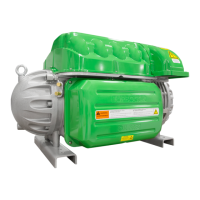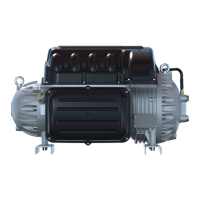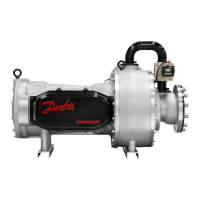Compressor Components Page: 29 3.3.1 Function Explains the function of the main voltage input terminal block.
3.3.2 Connections Details how the AC power is routed to the SCRs and Soft Start board.
3.4.1 Function Explains the function of the Soft Start Board in limiting in-rush current.
3.5.1 Function Describes the role of SCRs in converting AC voltage to DC for the Inverter.
3.6 DC Bus Describes the DC bus components and their function.
3.6.1 Function Explains the role of DC bus components like capacitors, bus bars, and resistors.
3.6.3 Verification Procedures for verifying DC bus voltage, bleed resistors, and snubber capacitors.
3.7.1 Function Explains how the Inverter generates AC output voltage for the motor.
3.8 Motor Describes the motor specifications and protection.
3.8.1 Function Explains the motor's function as a permanent magnet synchronous motor.
3.8.1.1 Stator Describes the stator's role in generating force for the shaft.
3.8.1.2 Rotor Describes the rotor's design and its synchronous characteristic.
3.9.1 Function Explains the converter's role in providing voltage to the Backplane.
3.9.3 Verification Procedures for verifying HV DC/DC converter input/output voltages and resistances.
3.10.1 Function Explains the Backplane's function as a power and signal distribution hub.
3.11.1 Function Explains the Serial Driver's role in controlling solenoids and LEDs.
3.12.1 Function Explains the function of solenoids in controlling refrigerant flow.
3.13 IGV Describes the Inlet Guide Vanes (IGV) assembly.
3.13.1 Function Explains the IGV's function in controlling compressor capacity.
3.14 BMCC Describes the Bearing Motor Compressor Controller (BMCC).
3.15.1 Function Explains the CIM's function in user control and status reporting.
3.16.1 Function Explains the PWM Amplifier's role in supplying current to bearing coils.
3.18.1 Function Explains how bearing sensors provide shaft orbit information.
3.19.1 Function Explains the cavity sensor's role in measuring motor-cooling gas temperature.
3.20.1 Function Explains the function of pressure/temperature sensors in monitoring compressor operation.
